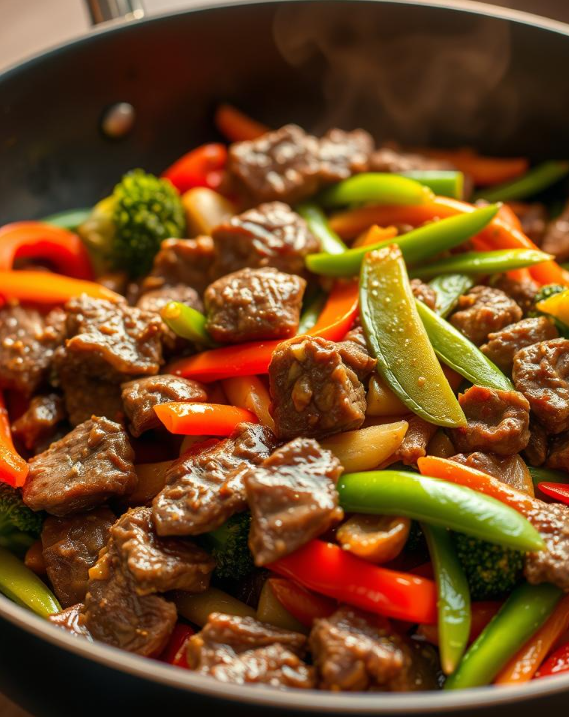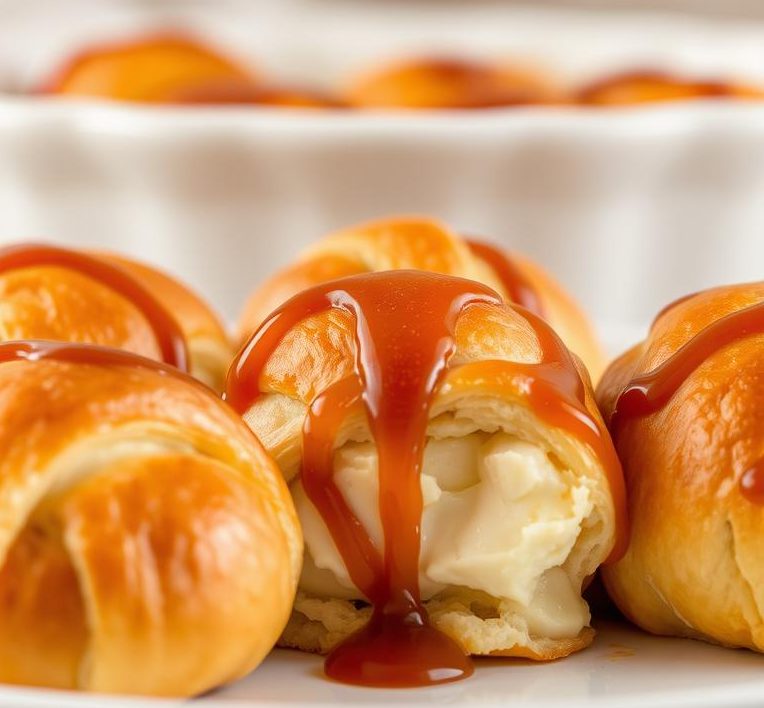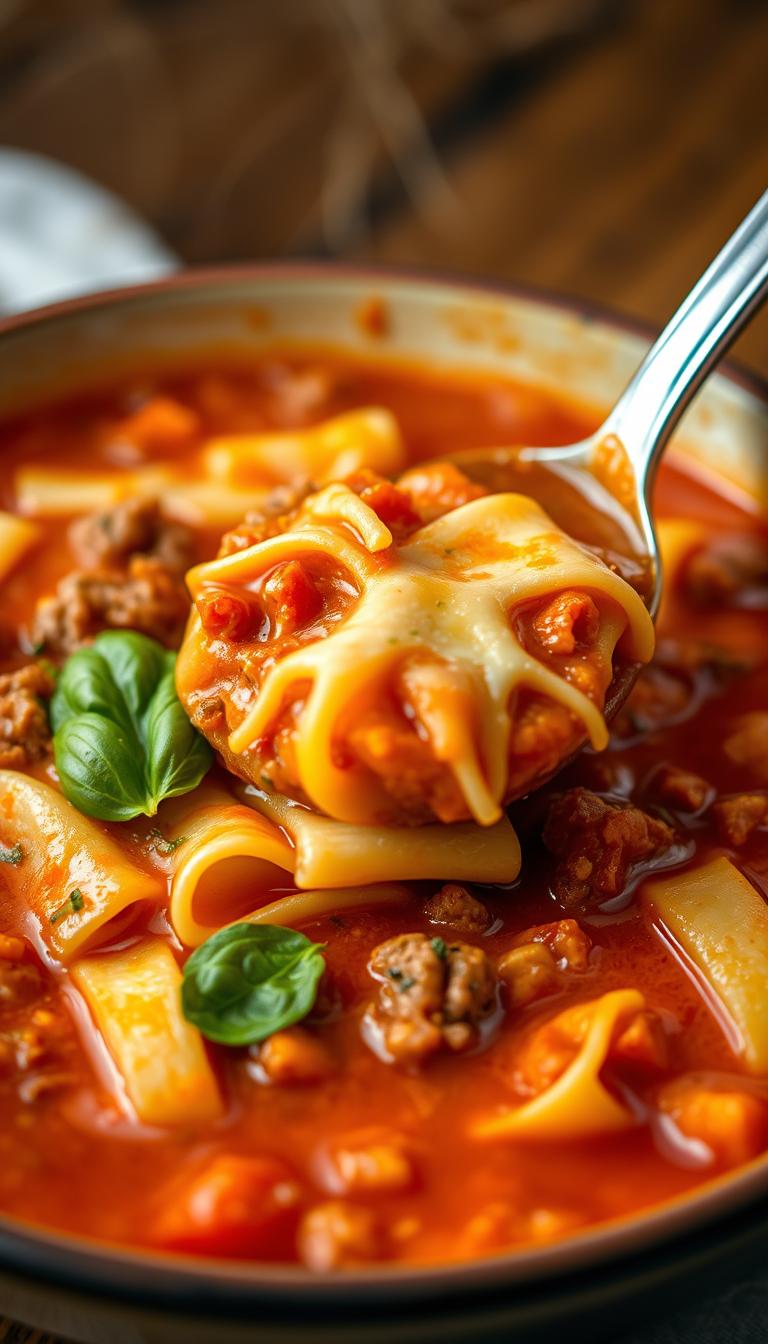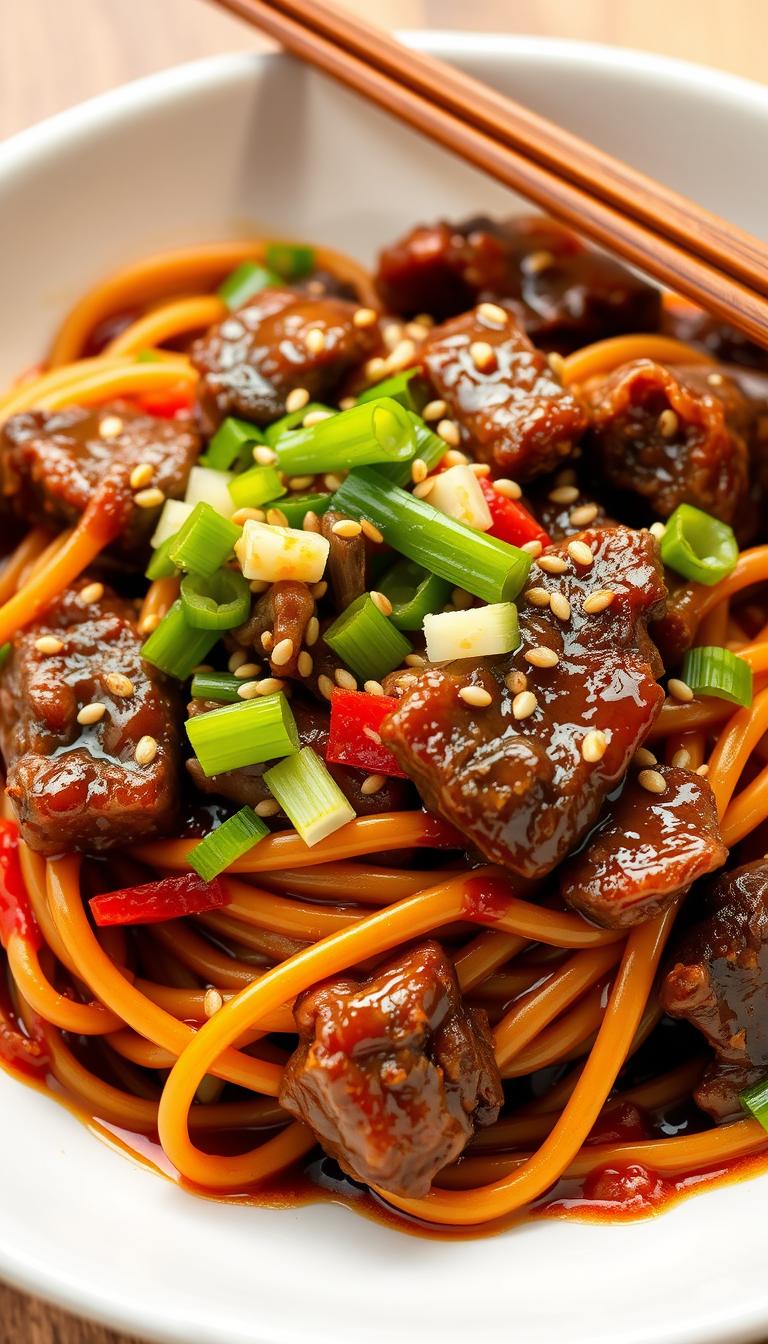Easy Beef Stir Fry with Noodles and Sticky Sauce Recipe
Craving a quick, flavorful dinner? This one-pan meal brings tender meat, fresh veggies, and a rich glaze together in under 30 minutes. Perfect for busy weeknights, it’s a crowd-pleaser with takeout-style appeal.
Packed with 34g of protein per serving, this dish balances nutrition and taste. Customize it with your favorite vegetables or swap ingredients for dietary needs. Testers love using steak for its juicy texture, but the recipe adapts easily.
Key Takeaways
- Ready in 20-30 minutes with minimal cleanup
- Family-friendly and highly customizable
- Contains 34-37g protein per serving
- Gluten-free options like tamari and rice noodles work well
- Uses affordable, simple ingredients
Why You’ll Love This Beef Stir Fry
Need a fast, delicious meal without the hassle? This stir fry delivers bold flavors in just 20 minutes. Prep noodles while searing meat—efficient steps save time without sacrificing taste.
One pan does it all. Use a wok or deep skillet to minimize cleanup. No piles of dishes—just a satisfying dinner with takeout appeal.
Budget-friendly too. Flank steak keeps costs low ($15–$20 total), beating restaurant prices. Freeze extras (without noodles) for up to 3 months—ideal for meal prep.
Kids adore the sweet-salty glaze. Honey, soy, and oyster sauce create a balanced umami punch. Customize veggies to suit picky eaters or spice lovers.
Ingredients for Beef Stir Fry with Noodles and Sticky Sauce
Gather these simple ingredients for a restaurant-quality meal at home. Fresh, thinly sliced steak and crisp vegetables pair with a glossy glaze for bold flavor. Customize with pantry staples or seasonal picks.
For the Beef
Use 1 lb flank or sirloin, trimmed of fat. Slice against the grain for tenderness. Coat with cornflour and a pinch of five-spice for crisp edges. Marinate briefly with garlic and rice wine if time allows.
For the Vegetables
Bell peppers, carrots, and snap peas add crunch. Swap in broccoli or mushrooms for variety. Aim for 2–3 cups total—enough to balance the protein.
For the Sauce
Whisk together ¼ cup soy sauce, 2 tbsp honey, and 1 tsp sesame oil. Add oyster sauce for depth or chili paste for heat. A cornstarch slurry thickens it perfectly.
For the Noodles
Choose 8 oz dried egg or rice noodles. Cook al dente, then rinse to stop sticking. Toss with a dash of oil to prevent clumping.
To Cook and Garnish
Heat 1 tbsp high-smoke-point oil in a wok. Finish with sesame seeds or green onions. A squeeze of lime brightens the dish.
Step-by-Step Cooking Instructions
Master this restaurant-style dish with foolproof steps for perfect results. Each phase—from prepping ingredients to the final toss—ensures balanced textures and bold flavors. Work quickly for the best outcome.
Preparing the Noodles
Parboil dried noodles for 4–5 minutes, or 2 minutes less than package instructions. Drain and rinse under cold water to stop cooking. Toss with a drizzle of oil to prevent clumping.
Preparing the Beef and Vegetables
Coat thinly sliced steak with cornflour and spices while the pan preheats. This “velveting” step keeps meat tender. Chop veggies uniformly—hard ones like carrots first, softer ones like peppers last.
Cooking the Stir Fry
Heat 1 tbsp oil in a wok until smoking. Sear beef in batches (90 seconds each) to avoid steaming. Remove and sauté veggies over high heat for 2 minutes. Add garlic and ginger, stirring constantly.
Deglaze with soy sauce mixture, simmering until thickened (about 1 minute). Return beef and noodles to the pan, tossing to coat evenly. Serve immediately for optimal texture.
Tips for the Perfect Beef Stir Fry
Professional chefs rely on these three fundamentals for perfect searing every time. Master them to transform tough cuts into tender bites with caramelized edges. The right steak, precise slicing, and proper pan setup make all the difference.
Choosing the Right Steak
Opt for 1.25lb flank or sirloin with visible marbling—the fat melts during cooking, adding flavor. Thinner cuts (½ inch) sear faster while staying juicy. Avoid lean options like round steak, which can turn chewy.
Cutting Against the Grain
Always slice your steak perpendicular to the muscle fibers. This breaks up tough connective tissue, making each bite tender. For maximum surface area, angle your knife at 45° when creating cut thin strips.
Chill the meat for 20 minutes first—it firms up for cleaner slices. Aim for uniform ¼-inch pieces so everything cooks evenly. Discard excess fat or render it separately for crispy garnishes.
Getting the Pan Hot Enough
Your pan should be smoking-hot before adding oil. Test with water droplets—if they dance and evaporate instantly, you’re ready. Use avocado or sunflower oil for their high smoke points.
Work in batches if needed. Overcrowding lowers the heat, causing meat to steam instead of sear. Let pieces sit undisturbed for 60 seconds to develop that golden crust everyone loves.
Serving Suggestions
Elevate your meal with these restaurant-inspired plating ideas. A sprinkle of crushed peanuts or toasted sesame seeds adds crunch and visual appeal. Fresh herbs like Thai basil or cilantro brighten each bite.
Pair with tangy lime wedges and chili flakes for customizable heat. For a feast-style spread, serve alongside scallion pancakes or pork dumplings. Pro tip: Use colorful veggies like cucumber slices for contrast.
Perfect Pairings
| Side Dish | Why It Works |
|---|---|
| Scallion Pancakes | Buttery layers balance the dish’s richness |
| Steamed Rice | Neutral base soaks up extra sauce |
| Off-dry Riesling | Wine’s sweetness offsets spicy notes |
Transform leftovers by tossing them into fried rice with scrambled eggs. Prefer chicken? Swap proteins easily—the sauce works with any meat. This versatile dinner adapts to your pantry and preferences.
Variations and Substitutions
Transform this recipe with simple swaps for endless possibilities. Whether you’re accommodating dietary restrictions or just craving variety, these tweaks keep the dish exciting.
Vegetable Swaps
Mix and match produce based on season or preference. Crisp green beans replace mange tout, while bok choy or cauliflower adds earthy depth. Pro tip: Hard veggies like carrots cook first; leafy ones go last.
- Spring: Asparagus and snap peas
- Fall: Kabocha squash and shiitake mushrooms
- Low-carb: Zucchini noodles or spiralized daikon
Gluten-Free Options
Swap regular soy sauce for tamari or coconut aminos. Thicken sauces with xanthan gum instead of cornstarch. Rice or sweet potato noodles work beautifully for a celiac-friendly meal.
“Gluten-free cooking doesn’t mean sacrificing flavor—just smart substitutions.”
| Original Ingredient | Gluten-Free Swap |
|---|---|
| Soy sauce | Tamari or coconut aminos |
| Egg noodles | Rice noodles or kelp noodles |
| Oyster sauce | Mushroom-based sauce |
Turn leftovers into fried rice by tossing them with scrambled eggs and day-old rice. For protein swaps, try chicken thighs (cook 8–10 minutes) or shrimp (3–4 minutes). Tempeh marinated in ginger and garlic shines in vegan versions.
Nutritional Information
Understanding the nutritional profile helps you make informed meal choices. Each serving ranges from 480–656 calories, depending on oil usage and fat content in the steak. For lighter options, trim excess fat or use leaner cuts.
The dish delivers 34–39g of protein—ideal for muscle recovery. Balance it with fiber by adding ½ cup edamame (+4g). *Pro tip:* Toss in bell peppers for extra vitamin C (54mg per serving).
“Reducing sodium is easy: swap regular soy sauce for low-sodium versions (35% less).”
- Calories: 480–656 (varies by ingredients)
- Sodium: 812–1,479mg (adjust with tamari)
- Sugar: 11–13g (mainly from honey)
- Vitamins: 42mg vitamin C, 4,028 IU vitamin A
Prefer less sweetness? Reduce honey by half. The dish still shines with umami from garlic and ginger. Nutrient-dense and adaptable, it fits most dietary goals.
Storage and Reheating Tips
Keep your leftovers fresh and flavorful with these smart storage tricks. Proper handling ensures every bite tastes as good as the first.
For fridge storage: Use an airtight container and separate noodles from sauce. This prevents sogginess. Leftovers last up to 3 days.
Reheating: Warm in a skillet with 1 tbsp water over medium-low heat. Stir occasionally for even warmth. Microwaving works too—cover to retain moisture.
“Freezing sauce separately locks in freshness for quick future meals.”
Freezing: Portion sauce and veggies in silicone cubes. They’ll keep for 3 months. Thaw overnight before reheating.
Food safety: Discard if left out over 2 hours. Prep ingredients ahead to save time, but store them properly.
Conclusion
Mastering this recipe comes down to three essentials: blistering-high heat, quick batch cooking, and perfect sauce timing. These techniques ensure tender meat and crisp veggies every time.
Make it your own! Swap proteins or load up on extra vegetables. Share your twist using #MyStirFryCreations—we love seeing your ideas.
For best results, use a carbon steel wok and sharp cleaver. These tools give you restaurant-quality sear and precision cuts.
Tried this dinner? Rate it ⭐️⭐️⭐️⭐️⭐️ and tag @TamingTwins in your post. Your feedback helps others discover this flavorful meal!












